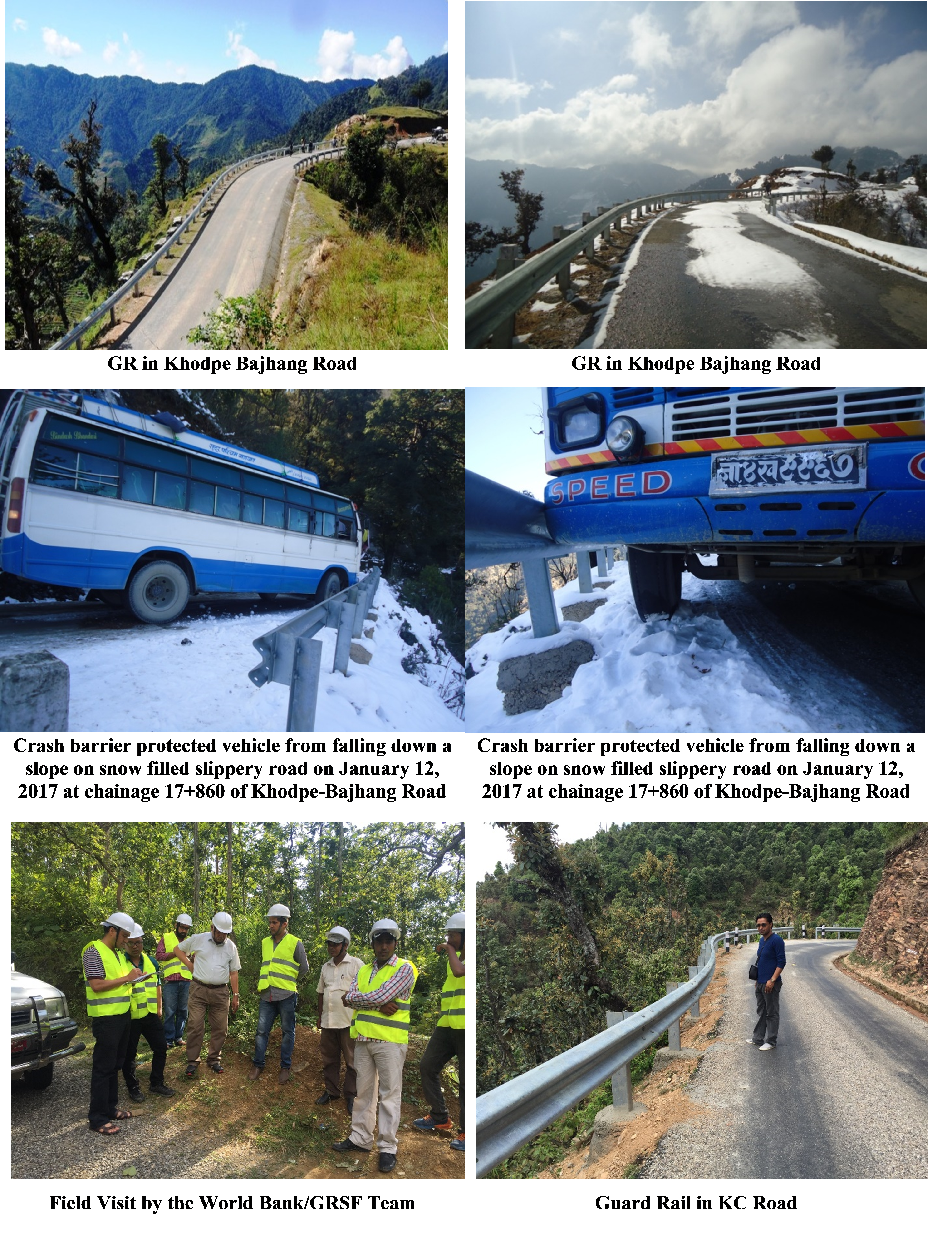GRSF Funds Road Safety Barriers for Open Roads in Nepal
October 05, 2022
Under the Road Sector Development Project, the World Bank financed a Road Safety Audit of various sections of the Nepalese Strategic Road Network (2015-2017) to identify critical road safety risks and recommend solutions. Building on this work, the Global Road Safety Facility (GRSF) with funding from UK Aid supported the installation of 73,000 meters of crash barriers along some of the country’s deadliest roads. According to GRSF projected estimates, the new barriers may save up to 3,456 lives over the next 20 years, in addition to preventing countless injuries.
The Challenge
At high embankments and hilly terrain, critical road safety inf rastructure treatments are needed to guide the out-of-control vehicles back to the traveled way.
The Solution
One of the ways to mitigate the risk, is the effective use of road crash barrier systems which are appropriate for such road environment. Road crash barriers do not only reduce the likelihood of crashes happening, but also lower the severity of the outcome in such cases.
In Nepal, thanks to the World Bank Road Sector Development Project (RSDP), in support of GRSF, the outcomes of the project included that 73,000 meters of crash barriers.
These represented: 76% of the high-risk locations under the project.
An evaluation after the installation of the barriers indicated that at least 7 hits were recorded and vehicles carrying 270 passengers were saved from departing from the roadway and potentially falling into the valley.
Given the terrain, many of the 270 passengers would have died if these vehicles had left the road and fallen down the cliff. If similar rates continued in future years, that could equate to 3,456 lives saved over a 20 year period.


Installation of Safety Guard Rails in Nepal under the RSSP Project. Credit: World Bank/GRSF team
